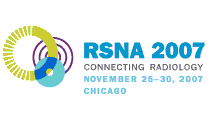
Abstract Archives of the RSNA, 2007
SSC09-04
Hepatocellular Carcinoma Treated with Transarterial Chemioembolization: Value of Perfusion CT in Assessment of Residual Tumor
Scientific Papers
Presented on November 26, 2007
Presented as part of SSC09: Gastrointestinal (CT/MR Perfusion: Liver)
Davide Ippolito MD, Presenter: Nothing to Disclose
Sandro Sironi MD, Abstract Co-Author: Nothing to Disclose
Francesca Invernizzi MD, Abstract Co-Author: Nothing to Disclose
Massimo Pozzi MD, Abstract Co-Author: Nothing to Disclose
Laura Antolini PhD, Abstract Co-Author: Nothing to Disclose
Ferruccio Fazio MD, Abstract Co-Author: Nothing to Disclose
To asses the value of CT perfusion technique in detection of residual HCC vascularization after transarterial chemioembolization(TACE).
Twenty-five consecutive patients were prospectively included in this study. All of them had liver cirrhosis and confirmed HCC lesion which was treated with TACE. One month after treatment, perfusion measurements of treated lesions were carried out. CT perfusion protocol(CTp) was performed with 16 slices MDCT(Brilliance 16, Philips, NL) with following parameters: 8 dynamic slices/scan per 40 scans after i.v. injection of 50 ml of iodinated contrast(350 mgI/ml) at flow rate of 6 ml/sec. Treated lesions were evaluated using a dedicated perfusion software, which generated a quantitative map of arterial and portal perfusion. The following parameters were considered: Hepatic perfusion(HP); Arterial Perfusion(AP); Blood volume(BV) and Hepatic Perfusion Index(HPI). Univariate paired Wilcoxon signed ranked test was used for statistical analysis.
Perfusion parameters of the treated lesions could be quantitative assessed using CTp analysis after generation of quantitative color map. Seven out of 27 patients had a residual disease with the following mean values for each parameter: HP(ml/100gr/sec) 32,7±15,1; AP(ml/min) 38,4±8,8; BV(ml/100gr) 17,6±9,5; HPI(%) 96,2±7,5. The corresponding perfusion values calculated in patients without residual tumor were: HP 13,6±6,3; AP 13,1±7; BV 6,8±4,8; HPI 13,6±9,2; respectively. A significant difference (p<0.001) was observed in mean value of all the parameters calculated between treated lesions with residual tumor and those successfully treated. CT-p technique has demonstrated highly perfused areas, thus related to the presence of residual arterial vessels within the viable portion of treated HCC lesions.
CTp is a useful technique in quantification of blood supply in residual HCC after TACE and could be used to monitor the therapeutic effect of treatment.
In patients with HCC treated with TACE, CTp provides measurement of flow parameters related to residual arterial structure in viable tumor, thus helping in the assessment of therapeutic response.
Ippolito, D,
Sironi, S,
Invernizzi, F,
Pozzi, M,
Antolini, L,
Fazio, F,
Hepatocellular Carcinoma Treated with Transarterial Chemioembolization: Value of Perfusion CT in Assessment of Residual Tumor. Radiological Society of North America 2007 Scientific Assembly and Annual Meeting, November 25 - November 30, 2007 ,Chicago IL.
http://archive.rsna.org/2007/5009288.html

